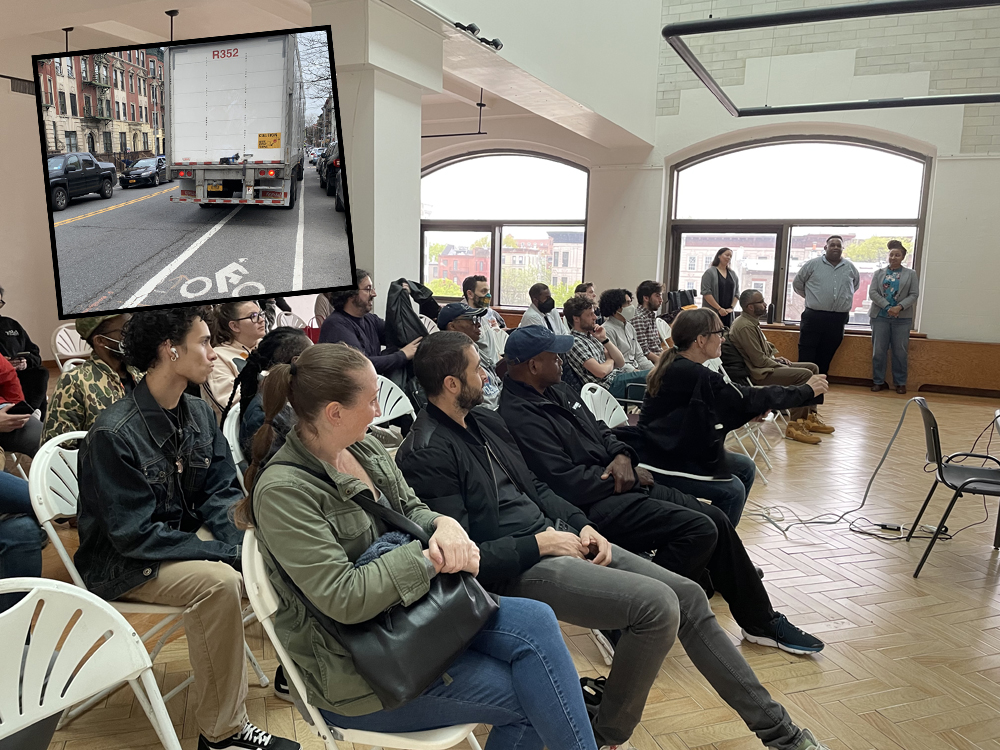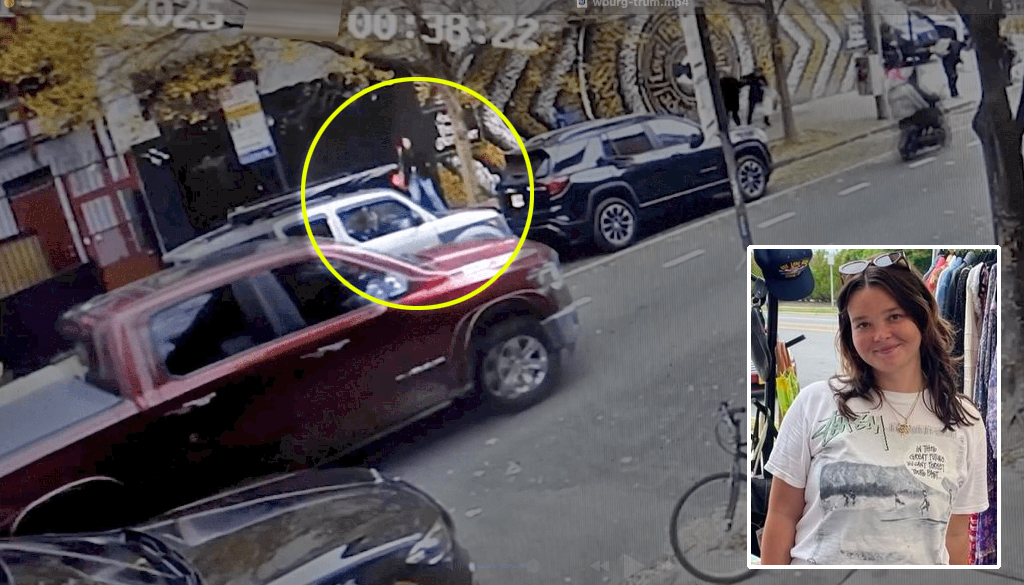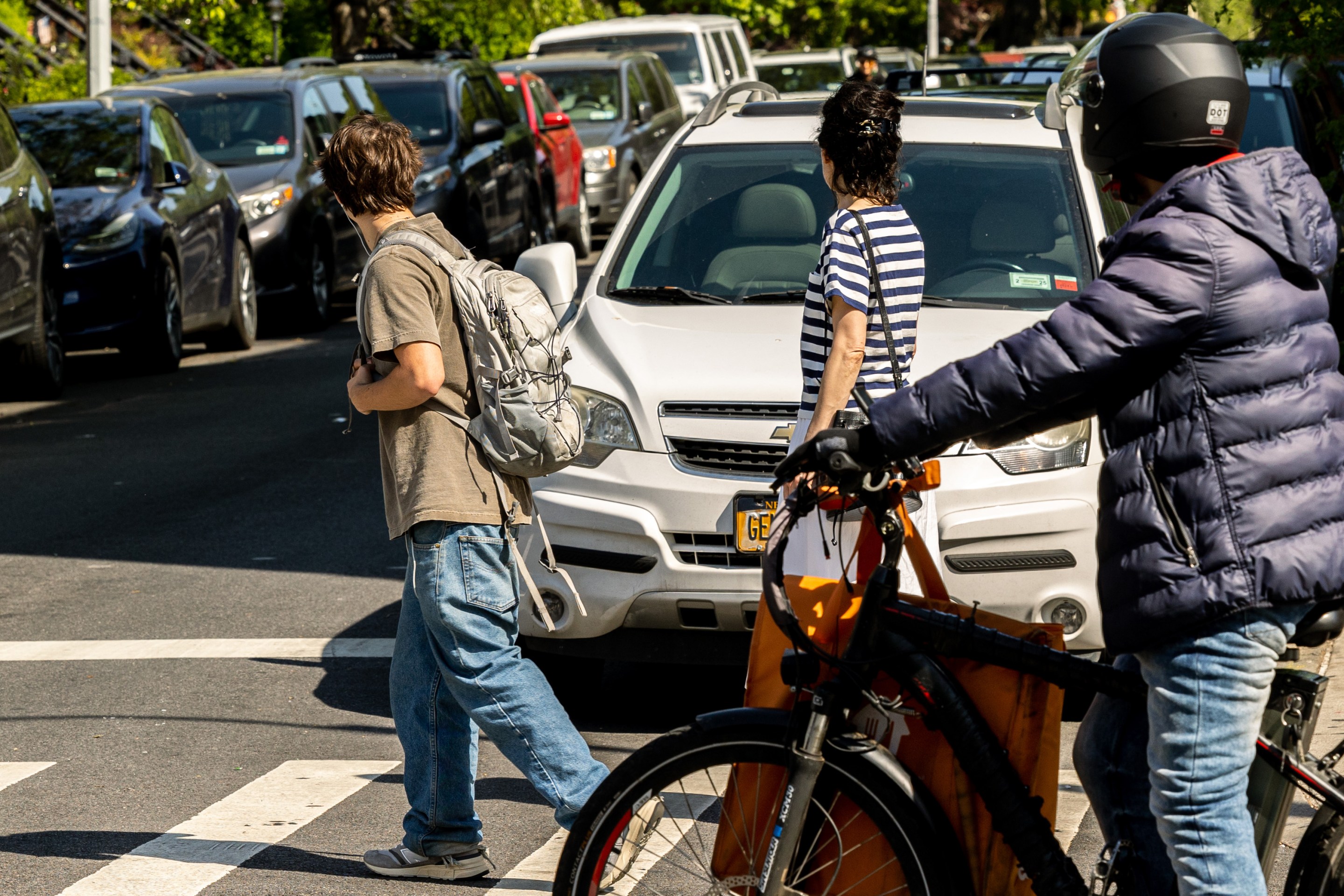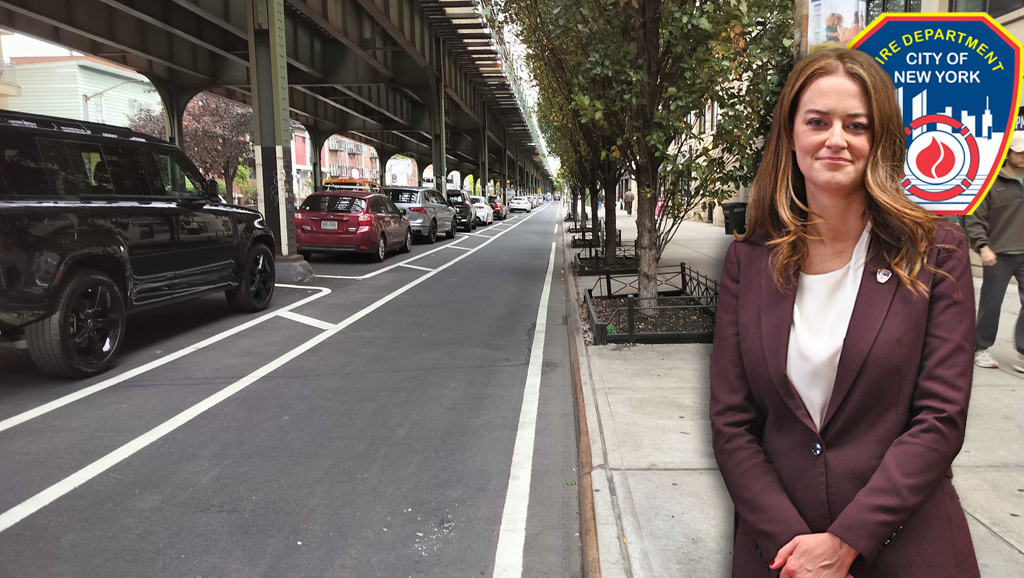The journey of a thousand miles has taken its first steps.
The Department of Transportation revealed the long-awaited Bedford Avenue protected bike lane project, a key upgrade to one of Brooklyn's most important bike routes in a virtual presentation to Community Board 8 in Prospect Heights on Tuesday and an in-person meeting for Community Board 3 in Bedford-Stuyvesant on Thursday.
The 10-mile long Bedford Avenue is a key north and south bike route from Sheepshead Bay to Williamsburg, even though its safety benefits are muted because the bike lane on the street is just paint. Beyond the fact that a painted lane is already on Bedford Avenue, the DOT also laid out the stark necessity of the upgrade when they made their presentations at both meetings. Both community boards where the painted bike lane is are priority bicycle districts, which the DOT identifies as neighborhoods that have a combination of a high number of cyclists who are killed or severely injured and a lack of bike infrastructure.
In Community Board 3, city stats show that there were 21,553 reported crashes between 2016 and 2022, or roughly eight crashes per day. Those crashes killed three cyclists, 12 pedestrians and eight motorists, and injured 1,132 cyclists, 1,499 pedestrians and 5,178 motorists.
Over the same period in the smaller Community Board 8, there were 11,960 reported crashes, which killed one cyclist, 12 pedestrians and 7 motorists, and injured 628 cyclists, 903 pedestrians and 4,590 motorists.
The proposal turns an existing painted northbound bike lane between Dean Street and Flushing Avenue into a barrier-protected bike lane between Bergen Street and Halsey Street, and then a parking-protected bike lane between Halsey Street and Flushing Avenue.
Proponents hailed the long-overdue protection on the key route that has seen its share of carnage over the past few years. According to city data, there were more than 2,000 crashes on Bedford between Dean Street and Flushing Avenue from 2016 to 2022. Those crashes killed five pedestrians and injured more than 800 people, including 141 cyclists and 101 pedestrians.
"As a cyclist, it's scary being out with cars when they don't really have a lot of regard for people on bikes," said Amara Ross. "Bedford especially is a nightmare, but it's a really direct route to get to other bike paths in this area so having a protected bike lane will make me feel a lot safer. Having a more direct paths, it puts you in a situation where you're not having to stop and check a map or jump in and out of traffic."
"I was almost hit [on Bedford] a couple of years ago. Fortunately, it was a near miss but it was still enough to make me put my bike down for almost a year or so. And if there had been a protected bike lane at that time, the scenario that played out for me would not have been possible because I would have had the protection of a parked car already," Ross added.
There a number of different elements in the design of Bedford:
- At Bergen Street, the DOT would add a painted mid-block transition to guide cyclists to a green-painted bike box at the intersection where traffic crosses Dean Street. Bedford Avenue transitions from a road with northbound and southbound traffic at Dean Street, where the road intersects with northbound-only Rogers Avenue. Cyclists currently have to negotiate that merge by crossing the northbound lane of traffic on Bedford, from the bike lane on the east side of the block south of Dean Street to get to the bike lane on the west side of the street north of Dean. The DOT said the design encouraging a midblock transition in this spot will put cyclists in a better position to move north past the tricky merge and into the painted bike lane north of Dean. The city is also adding a painted pedestrian bumpout near the entrance to the protected bike lane.
- Between Dean and Pacific streets, the city will remove eight parking spots on the west side of Bedford Avenue to create a barrier-protected bike lane, as DOT officials say road width constraints prevent them from keeping the parking.
- Between Pacific Street and Atlantic Avenue, the painted bike lane that sits sandwiched between the northbound traffic lane and the left turn lane will be shifted over to the curb and protected with a barrier. The DOT is not installing a complete split phase for drivers making left turns, but northbound cyclists and pedestrians will get to use a leading pedestrian interval at the intersection. The city is also installing a concrete median in the west crosswalk through Atlantic Avenue to slow down drivers making left turns from Bedford to Atlantic.
- Between Atlantic Avenue and Halsey Street, the existing bike lane will be shifted to the curb and turned into a barrier-protected bike lane. Similar to the situation between Dean and Pacific streets, this three-block stretch is too narrow for parking, so the agency said will remove 16 spots.
- Between Halsey Street and Flushing Avenue, the DOT is creating a standard parking protected bike lane by flipping the current setup of a painted bike lane between the parking lane and motor vehicle traffic. The DOT is also installing pedestrian islands at each intersection to shorten crossing distances for pedestrians, which the agency said will mean the loss of an average of one parking space per block.
Speakers at Thursday's meeting at Restoration Plaza were overwhelmingly in favor of the proposed protected bike lane, talking about near-misses with cars in the bike lane, conflict with speeding drivers and the need for the city to control the traffic chaos on Bedford Avenue.
"I'm a father of a young child and so my biggest concern is safety, both as a pedestrian and a person on a bike," said a speaker who gave his name as Zack and said he was a car owner as well as a cyclist. "Speeding is a huge issue here, it's out of control, so anything that should help calm traffic is really important."
Safe streets activists started a campaign earlier this year to upgrade the paint on the street to a protected bike lane all the way from Flushing Avenue to Flatbush Avenue, a campaign that picked up a major pillar of support in Council Member Chi Ossé, who also campaigned on adding a protected bike lane to the street.
Ossé sent a representative to the meeting on Thursday, but did not attend himself, which allowed a pair of opponents to claim the mantle of elected officials speaking for the community, and pushed the idea that the DOT should just pick a different block than the centrally located Bedford Avenue. Two VIPs — former Assembly Member Tremaine Wright, who previously said street safety was "not an issue" in Bed-Stuy and who's opposed even painted bike lanes in CB3, and her successor Stefani Zinerman — slammed the existence of the painted lane, arguing that no matter what the DOT ever did, the street would never be safe.
Zinerman even argued that the painted lane bike lanes have made the roadway less safe.
"I've requested the data prior to 2015 of how many people actually died on their bikes on Bedford Avenue before we put the lane, and I'm still waiting for the data because the answer is nobody did. We actually put people in the situation."
Here is the data, which is available to all at crashmapper.org:
- In the 40-month period from August 2011 through December 2014, there were 1,121 reported crashes on Bedford Avenue between Flushing Avenue and Dean Street, in which three pedestrians were killed, and 65 cyclists, 85 pedestrians and 238 motorists were injured, according to city data.
- In the most-recent 40-month period along the same stretch of roadway, the number of reported crashes dropped to 472 (a decline of nearly 60 percent) and the number of cyclist deaths dropped to zero. Overall injuries dropped to 44 cyclists (a decline of 32 percent), 39 pedestrians (a decline of 54 percent) and 162 motorists (a decline of 32 percent).
A DOT representative at the meeting pushed back on Zinerman's argument that upgrading the paint couldn't make the road safer for pedestrians as well as cyclists, pointing to the agency's data that shows that pedestrian injuries fell by 21 percent on streets where the city installed protected bike lanes.
Supporters of the project also said that ripping out the bike lane didn't make sense in the context of how busy Bedford Avenue is for both drivers and cyclists.
"This is important because the bike lane that currently exists on Bedford is there, so why not protect it?" said Marv Marcel, the chief creative officer at Good Co. Bike Club, a Black-led bike club which has rallied for the protected bike lane. "[The bike lane] is not going to go away and it's important to improve on the infrastructure that's already here as opposed to stripping it away, which would cause a busy avenue like Bedford to be even more dangerous."
Ossé's no-show left some constituents frustrated. The Council member does support the Better Bedford campaign, recently exhorting neighborhood cyclists to attend the meeting, but his representative didn't even speak at the meeting.
"I am by and large very encouraged by the overwhelming support and the fact that most people wanted to see this project go even further," said Emily Stutts. "But the fact that Council Member Ossé didn’t show up, and the rep he sent was completely silent, was a huge disappointment, because he’s literally the best we've got in office and he couldn’t even show."
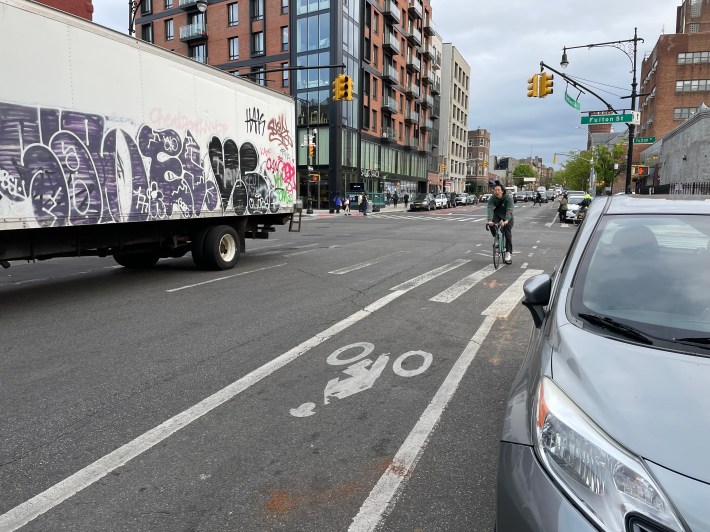
Lauren Renee, the DOT's project manager for the bike lane, said that the city planned to install the bike lane in the second half of 2023.
